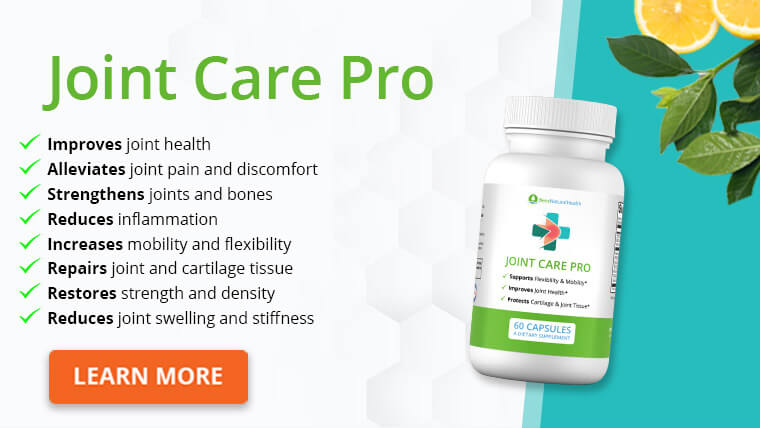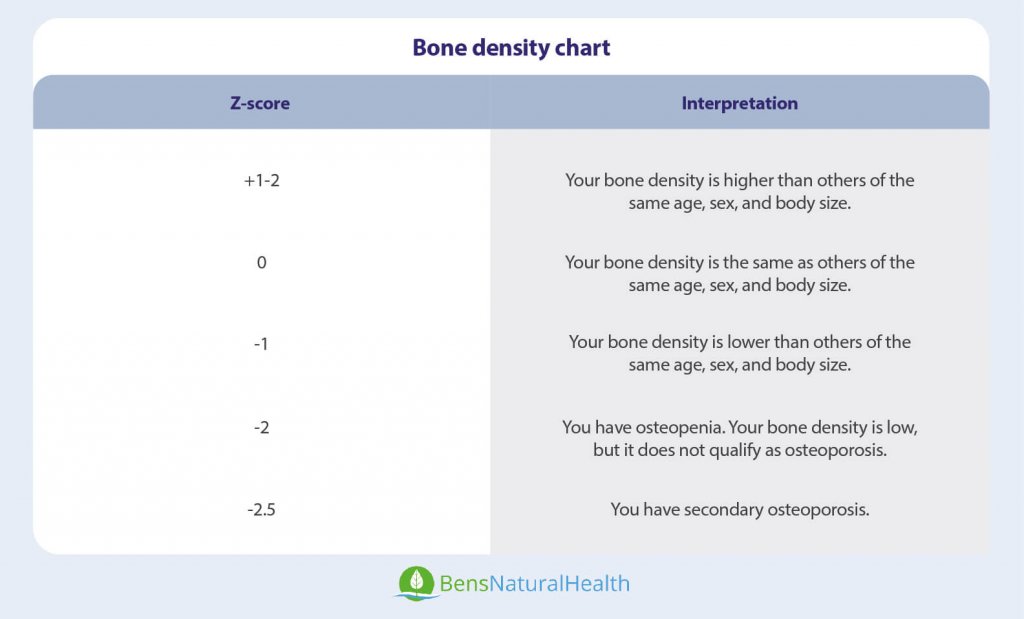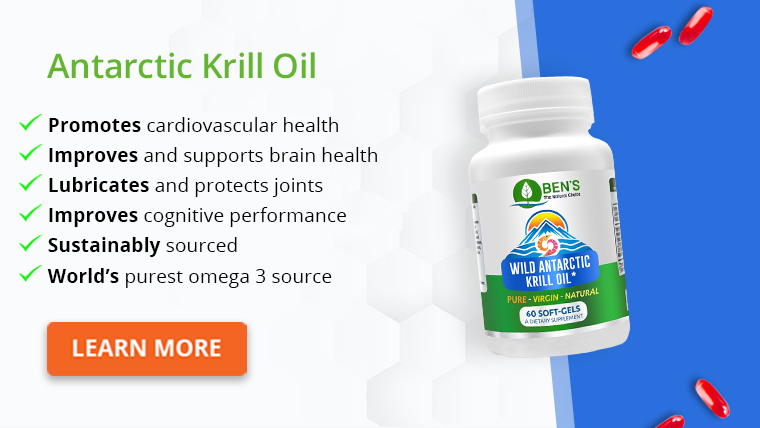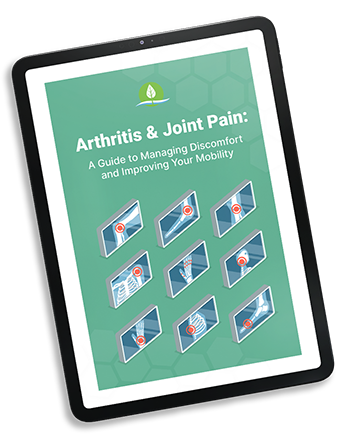Bone density is essential in bone health, particularly in preventing structures.
Many seek to increase their bone health and density, but how can we improve it naturally?
This article identifies how bone health is essential and how we can improve it naturally.
Let’s explore together.
What is bone density?
Bone density is the amount of mineral in bone tissue or, simply put, it is the extent of how porous your bones are.
Usually, our bones continuously lose old cells and replace them with new ones. This keeps the bone in a constant flux of renewal such that even as you read this article, you are losing some cells and gaining others. However, this process does not happen at the same rate for different age groups or sexes.
As you grow, your bone density peaks in your late 20s. However, there is a decline beyond this age, especially when you reach 60.
At this point, the osteolytic processes of losing bone tissue are more than the processes of regenerating new bone. The result of this is a porous bone rather than the compact bone.
This condition of having porous bone is usually referred to as osteoporosis, and perhaps you have heard your doctor mention it. It puts you at risk of fracturing your bones as they become more brittle daily.
Then comes the question, can I increase my bone density?
Yes, you can, but first, let’s learn how we can identify the problem of low bone density.
Get Your FREE Arthritis Guide
- Learn how to naturally improve your arthritis symptoms
- Dietary recommendations, exercise guides, supplements, and lifestyle changes
- Developed exclusively by our medical doctor
Signs and symptoms of low bone density
While bone density can be measured at health facilities, it is often tested when osteoporosis has set in or even when you’ve had a fracture.
It is imperative to recognize low bone density and start interventions early to prevent being a victim of avoidable fractures.
So, what are some of the signs and symptoms of low bone density?
1) Receding gums
Our teeth are connected to the jaw bone. When you lose bone minerals and have less bone density, it affects the teeth and, thus, the gums.
The result that is often observed is that of receding gums. It is, therefore, important to always ask your dentist about your gum health.
2) Muscle aches and bone and joint pain
As we grow older, we tend to normalize pain as part of our lives. However, sometimes this pain is an indicator of an underlying problem.
Muscle pain, joint, or bone pain can indicate several things, and one of them is low bone density. If you have had this pain for a while, then you should get a checkup on your bone density.
3) Decreased grip strength
Grip strength is one of the factors that help us maintain a stable, balanced posture. With low bone density, it has been found that the grip is often lost. It is the most critical physical test factor for women experiencing osteoporosis.
4) Height loss
You can lose at least one or two inches due to poor posture experienced in those with low bone density. If you have noticed this loss, then it is probably time that you should check your bone density.
All these signs, including lower overall fitness and weak and brittle fingernails, can be indicators of low bone density. When noted, they should ring a bell that it is time for you to get a bone density test and engage in activities that increase bone density.

What is a bone density test?
Signs and symptoms can often be diffuse and may indicate a different complication. Moreover, most of these signs and symptoms of low bone density are subtle, making them difficult to identify, or they may not even be present.
Therefore, it begs the question, is there a definitive way to test for bone density? Yes, there is, but before we delve into that, who should take the test and why?
In the United States, there are over 2 million fractures experienced yearly. A large portion of these involve spinal and hip fractures. These can cause dire consequences such as chronic pain, deformity, or even immobilization.
Low bone density exposes one to the risk of these fractures. This means that those at risk of low bone density should take the test to ascertain their bone density levels and incorporate the right interventions. These include all postmenopausal women and those above 60 years of age.
There are different tests, but the most common include dual-energy x-ray absorptiometry (DEXA), quantitative computerized tomography, and ultrasonography.
Dual-energy X-ray absorptiometry
According to experts, Dual-energy X-ray absorptiometry is the most practical and reliable test. It provides measurements of bone densities at the hip, spine, and forearm.
These measurements are used to identify fractures and osteoporosis and aid in managing patients with osteoporosis. One of its advantages is that it can be used even when one cannot lie down.
Make sure your doctor takes actual DEXA images and bone densities, as they can be more comprehensive than the summaries provided.
Additionally, follow-up exams should be done at the same facility because DEXA models can be different, and thus difficult to compare results.
Quantitate computerized tomography
A quantitate computerized tomography provides accurate spine bone density and can be an alternative to DEXA. However, it is not popular because it requires high radiation exposure and is expensive.
Ultrasonography
This is used to measure the bone density at the heel. It is acceptable in areas where DEXA is not accessible but is used less often because there are no standard guidelines for diagnosing. Nonetheless, it can still be a good tool for assessing fracture risk.
When testing for bone density, DEXA is the test of choice.
Bone density chart
T-score and Z-score determine bone density. T-score compares to a healthy person, while Z-score compares to the average of the same sex, age, and size. Both scores can be helpful, but experts prefer the Z-score.
The comparison is made by how one deviates from the average of their joint group. And the chart is as below.

What factors affect your bone density?
Several factors affect your bone density, but what are these crucial elements? Can physical activity affect my bone density? How does nutrition promote or destroy my bone health?
We’ll discuss these factors before considering how to increase our bone density naturally.
1) Gender
Usually, the male gender has greater bone density than females. This can be attributed mainly to hormonal differences between the two sexes.
2) Age
The younger population has a greater bone density than the older. As one grows and ages, the lytic bone processes increase while the bone regeneration processes decrease, leading to a high turnover rate. It is significantly worse if you are 60 years or older.
3) Hormones
Several hormones play a role in maintaining bone mass density. These include calcitonin, parathyroid hormone, cortisol, and estrogen. In case of malfunction, as in hypercortisolism and hyperparathyroidism, bone density reduces a great deal.
Additionally, and perhaps the most known way hormones affect bone density, is menopause. This comes with a decrease in estrogen levels, thus causing a massive loss of bone cells.
4) Diet
This is also important. Up to sixteen nutrients affect the growth of bone. Still, the most important are calcium, phosphate, and vitamin D. Low levels of these nutrients are a precursor to osteopenia and osteoporosis.
5) Physical activity
Exercise usually improves bone mass and, thus, density. This is especially true for weightlifting exercises. As muscle mass increases, so do bone mass, leading to improved bone density.
6) Drugs
This cut across both edges. However, essential to note is the steroidal drugs that increase the risk of low bone density, such as prednisone. Therefore, before taking such drugs, you must consider your risk of getting osteoporosis.
All these factors do not act singly. Multiple factors combine to expose one to low bone density, and alteration of one other aspect may avert the effects of others.
For instance, one may be old or female but still, have good bone density because of good physical exercise or hormone replacement.
Can you rebuild your bone density as you age?
In assessing the situation of low bone density, it is clear that there are modifiable and non-modifiable factors for bone density.
For instance, one cannot change their gender or age but can easily change their diet, exercise more, have hormone replacement therapy, and avoid drugs that lead to loss of bone mass.
Therefore, the answer to the question of whether you can rebuild your bone density as you age is clear: yes. And this will require proper plans in altering what can be modified to achieve the required bone mineral density.
There are several ways to do this, including taking prescriptions and supplements, which may also have side effects. The best way, then, comes by improving bone mineral density in natural ways.

8 ways to increase bone density naturally
How can you make your bones more robust? How do I increase my bone density without drugs or medication? Can exercises help rebuild my bone density? These are the questions the masses are asking, and perhaps, you are asking the same questions.
Let’s find out how we can increase our bone density to maximal levels.
1) Strength training
Studies have proved that weight-bearing exercises increase bone mineral density and promote bone growth.
One study suggests that a high-intensity exercise program alters the structure and composition of cuboidal bones and their metabolism. Its findings conclude that high-intensity exercises improve bone mass, strength, and metabolism.
This, therefore, means that it is essential that you engage in high-intensity exercises to improve your bone mineral density.
2) Eating lots of vegetables
Vegetables contribute largely to micronutrients and macronutrients needed for bone formation. Not only do they provide calcium, but they also have other nutrients that help use calcium, including vitamins.
A study in young children showed that those that took a vegetable diet were seen to have better fat and bone mineral density than those who did not.
Therefore, our diet plans must include cruciferous, yellow, and green vegetables for better mineral density.
3) Calcium, magnesium, and zinc
Calcium is the primary bone nutrient. A lack of it leads to increased bone turnover and poor bone growth.
Good sources of calcium include milk, beans, sardines, and green leafy vegetables.
Additionally, magnesium and zinc serve to support calcium. Magnesium activates vitamin D, which then promotes calcium absorption, while zinc forms part of the bone and prevents bone loss. You can find these two nutrients in nuts, legumes, and whole grains.
4) Vitamins
These are essential to an individual’s overall health, but the most important ones are vitamins K and D.
Vitamin K reduces the lytic bone processes, and vitamin D improves calcium absorption.
Good sources of vitamin K are green leafy vegetables and animal products such as eggs. At the same time, the primary source of vitamin D is the sun, among other vital vegetables, eggs, and cod liver.
5) Keeping healthy weight
Underweight individuals are at risk of bone disease and bone loss, while those that are overweight put more stress on their bones. Therefore, it is prudent to maintain a healthy weight.
6) Enough proteins
Proteins help in bone formation. According to a study involving 144,000 postmenopausal participants, those who consumed more protein had greater bone density. This was seen by the fact that they had fewer fractures compared to those taking little proteins.
For this reason, one must take a diet rich in proteins such as liver, eggs, and legumes.
7) Omega-3 fatty acids
Several studies have shown that omega-3 fatty acids play a role in maintaining bone density.
For instance, they have been shown to reduce osteopenia induced by the diabetic drug rosiglitazone.
Various foods contain omega-3 fatty acids, including salmon, mackerel, nuts, and seeds. In addition to consuming these fatty acids through their diet, people can also take supplements containing these fatty acids.
8) Stop smoking and avoid alcohol
Both smoking and taking alcohol are risk factors for osteopenia and osteoporosis finally. Avoiding them helps reduce that risk.
Ben’s Joint Care Pro
Joint Care Pro, our joint health supplement, contains natural, proven ingredients that support joint care and joint health.

It is designed to improve mobility and flexibility, reduce joint pain, restore joint strength, protect cartilage and joint tissue, and rebuild strength and density.
Conclusion
In summary, bone health is essential for one’s overall health. While most of the population may be at risk of low bone density, there are ways to rebuild bone density. You can do this naturally.
Explore More








